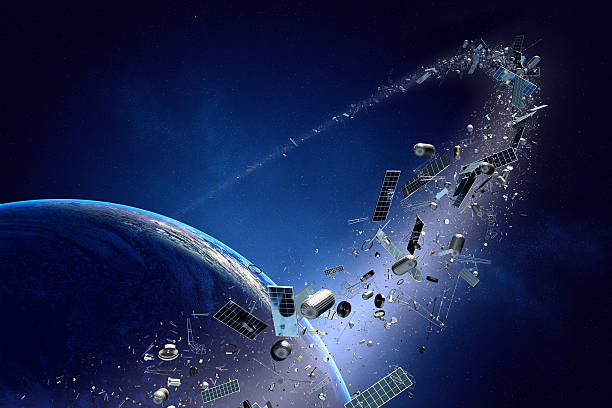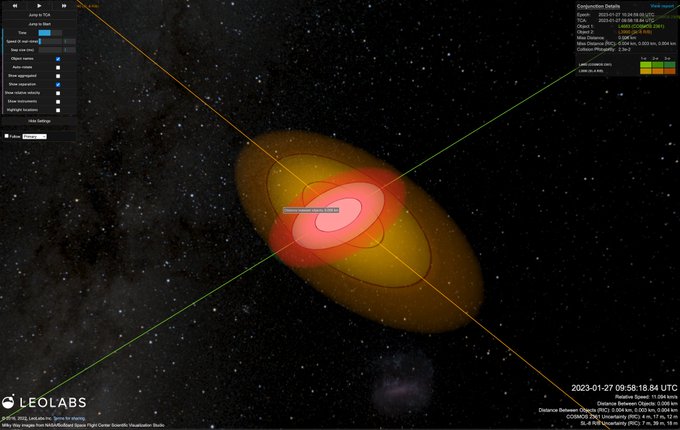A Russian KOSMOS 2499 satellite broke up last month — for a second time — according to the Space Force’s 18th Space Defense Squadron. In a recent tweet, the Space Force said they are currently tracking 85 individual pieces of debris at an altitude of 1,169 km (726 miles). The breakup occurred on January 4, 2023, but the reason for the disintegration remains unknown.

At this high altitude, it will take decades for the debris to deorbit and burn up in the Earth’s atmosphere, and presence of this debris in an increasingly busy region in Earth orbit.
But this is actually the second breakup event of Kosmos 2499. The first fragmentation occurred on October 23, 2021, according to Jonathan McDowell, an astronomer at the Harvard-Smithsonian Center for Astrophysics who also tracks space debris. That event created 22 pieces of trackable debris.
This satellite has had a curious history. Russia quietly launched KOSMOS 2499 on May 23, 2014. But tracking indicated the satellite performed unusual maneuvers, leading some to speculate that it may be an experimental anti-satellite weapon, satellite maintenance vehicle, or collector of space debris.
However, an article published on the official Moscow Institute of Physics and Technology website indicated the satellite was designed to test experimental plasma propulsion engines/ion thrusters.
Both the first and now second breakup event was thought to be caused by an explosion of that propulsion system. LeoLabs, Inc., a commercial provider of low Earth orbit mapping and tracking also tweeted about the current situation, saying that their analysis points toward a low intensity explosion, “due to the asymmetry of the debris cloud, magnitude of the velocity imparted to the fragments, and a known energetic source on board (i.e. the propulsion system).
LeoLabs said another identical spacecraft, Kosmos 2491, exploded in 2020, and that event has been attributed to an explosion of the propulsion system.
This event follows a recent close call where two pieces of leftover Soviet-era space junk passed within feet of each other on January 27, 2023. A piece of a rocket stage came as close as 19.7 feet (six meters) from a defunct satellite at an altitude of 611 miles (984 km) above Earth’s surface. If the two had collided, they would have created a debris cloud filled with thousands of tiny pieces of dangerous space junk.
Source: universetoday.com






